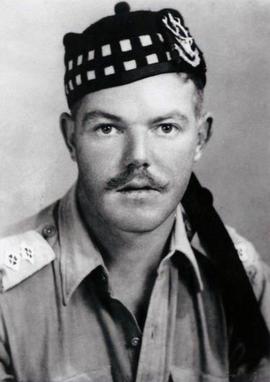Balfour, Ronald Egerton, son of Brig.-Gen. Sir Alfred Granville Balfour, K.B.E., C.B., of Chelsea, by Frances Elizabeth, only daughter of Surgeon-General Sir Benjamin Simpson, K.C.I.E.; b. Aug. 24, 1896; adm. Jan. 19, 1911 (A); left Easter 1914; served in Great War I; temp. Sub-Lieut. R.N.V.R. Sept. 1, 1916; Lieut. Aug. 24, 1918; hydrophone officer; Lieut. Cdr.; d. after a motor accident April 17, 1941.
Ronald Egerton Balfour was born at Hamilton, Lanarkshire on the 24th of August 1896 the youngest son of Brigadier General Sir Alfred Granville Balfour KBE and Agnes Frances Elizabeth (nee Simpson) Balfour of 7, Durham Place, Smith Street, Chelsea. He was educated at Westminster School where he was up Ashburnham from 1911 to 1914.
He enlisted as an Able Seaman in the Royal Naval Volunteer Reserve on the 6th of May 1915 for the duration of hostilities. He was appointed as a Midshipman on the 21st of July 1915 and was posted to the depot ship HMS Vivid for service with Rear Admiral Grant at Pembroke Dockyard. He was recommended for promotion in May 1916 when he was described as “A very talented young officer”, but this was not approved as he had not reached the required age of 20. It was also noted by a superior that: - “He is of great assistance to me, clear headed, keen on his work, but not very strong physically. Has had no training in seamanship or any experience afloat but is of great use in this office.”
He was promoted to Sub Lieutenant on the 1st of September 1916 and was posted to HMS President at Southampton as a Coding Officer on the 21st of June 1917. On the 13th of April 1918 he was posted to the battleship HMS Venerable for hydrophone duties and he transferred to Gibraltar on the 25th of June 1918 where he served on the Staff as a Hydrophone Officer on special duties.
He was demobilised from the Navy on the 20th of February 1919 and went to work as an artist and illustrator, being known too as a dress and costume designer.
In 1920, the publishers Constable & Company produced the “The Rubaiyat of Omar Khayyam” which was illustrated by Ronald Balfour and met with great critical acclaim. The Sphere magazine edition of the 20th of November 1920 carried the following: - “Mr Ronald Balfour, who has given us the newest edition of The Rubaiyat of Omar Khayyam, is, I am told, a cousin of Mr Arthur Balfour. What is of more importance, he is a very brilliant artist. In some of his pictures one suspects the influence of Beardsley, but then I am informed he had never seen Beardsley’s work when he made them. They are altogether a very charming interpretation of Edward FitzGerald’s great poem.”
The Scotsman edition of the 25th of November 1920 wrote: - “Mr Balfour’s designs are fancifully Oriental in character, touched with a considerable suggestion of Aubrey Beardsley, and it is possible that his rather lank divinities might not have entirely appealed to the imagination of the Persian poet. The designs, however, display a remarkable lightness and grace of line, and some of the little line drawings, printed upon the brown paper which is also employed for the letterpress, are extremely dainty, while the more elaborate designs in black and white, or in colour, printed on plate paper, are quite brilliantly executed.”
The Illustrated London News of the 27th of November 1920 wrote: - “Some of Mr Balfour’s illustrations to Omar Khayyam were done when he was little more than seventeen. Those most resembling the Aubrey Beardsley style were done before he had ever seen any of Beardsley’s”
The Times of the 9th of December 1920 wrote: - “The Rubaiyat” can be had with new illustrations by Mr Ronald Balfour (Constable, 21s. net), who, in spite of the influence of Beardsley on his drawing, gives us in a few colour plates and in many black and white drawings (some of them just touched with colour) a vision of the poem which is original and sincere if at times surprising. Even the audacity of showing us in one place a young man and woman in modern evening dress is carried off without shocking us too deeply, because it is what Mr Balfour honestly sees.” In 1928 and 1929 he participated in an expedition to the Himalayas which was chronicled in the book “Thin Air” by Constance Bridges published by Brewer and Webster of New York in 1930, and was illustrated by Ronald Balfour.
He was married at Westminster Cathedral on the 24th of April 1930 to Deirdre Phyllis Ulrica (nee Hart-Davis, later Wolfers, Brand and Inman); they lived at 24, Wellington Square, Chelsea and at Gadds Meadow, West Chiltington, Pulborough in Sussex. They had two daughters, Susan Mary, born in 1931, and Annabel Clare, born on the 20th of October 1935.
In 1934 he was appointed as the Art Director of Fox British Productions at Wembley and designed at least one costume for the actress Anna May Wong for the 1934 production “Java Head”.
On the outbreak of war he was recalled to the service with the rank of Acting Lieutenant Commander and he worked in the Map Room at the Admiralty.
His wife and daughters sailed from Liverpool to New York on board the SS Britannic on the 21st of July 1940.
On the night of the 16th/17th of April 1941 he was driving to his home in Sussex after a long day at the Admiralty. While he was driving on the Kingston bypass at Surbiton, Surrey he is thought to have fallen asleep at the wheel and was killed when his car left the road and crashed.
His brother, Major James Alfred Balfour, 1st Battalion, Highland Light Infantry, was killed in action on the 11th of January 1917.
He is not currently commemorated on the war memorial at Westminster School.
He is buried at St Mary’s Church, West Chiltington.

